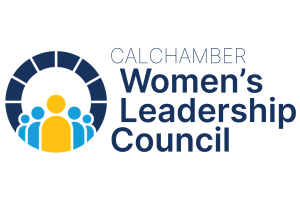 As October comes to a close, we celebrate the final day of National Women’s Small Business Month, taking a moment to reflect on the achievements and positive impacts women bring to communities when they own a small business.
As October comes to a close, we celebrate the final day of National Women’s Small Business Month, taking a moment to reflect on the achievements and positive impacts women bring to communities when they own a small business.
“Small businesses are the backbone of California’s economy and the significant contributions of women-owned small businesses are something that we should not only recognize, but celebrate,” said Sandra Floyd, president and CEO of OUTSOURCE Consulting Services, Inc. and inaugural chair of the CalChamber Small Business Policy Council.
In 1972, there were a little over 400,000 women-owned businesses in the United States and until 1988, women needed a male relative to co-sign if they wanted to apply for a business loan. Today, women-owned businesses are essential to the country’s economy, representing 39.1% of all business—more than 14 million—employing 12.2 million workers, and generating $2.7 trillion in revenue.
According to a study published this year by Wells Fargo in partnership with Ventureneer, CoreWoman, and Women Impacting Public Policy (WIPP), the number of women-owned businesses between 2019 and 2023 increased at nearly double the rate of those owned by men; and from 2022 to 2023, the rate of growth increased to 4.5 times.
CalChamber Women’s Leadership Council
 Earlier this year, the CalChamber launched the Women’s Leadership Council to help enhance the profile and contributions of California women business leaders and establish strong ties between them and elected officials, government appointees and other key decision makers in state government.
Earlier this year, the CalChamber launched the Women’s Leadership Council to help enhance the profile and contributions of California women business leaders and establish strong ties between them and elected officials, government appointees and other key decision makers in state government.
The WLC is chaired by Donna L. Lucas, CEO and founder of Lucas Public Affairs. The vice chair is Raji K. Brar, chief operating officer and co-owner of Countryside Corporation.
Serving as council advisor is Cassandra Pye, president, Lucas Public Affairs.
The council aims to create even more opportunities for CalChamber members to lead and support the state’s women leaders, and to provide pathways for women leaders of the future.
Drivers of Economic Growth
Whether it was during COVID-19 lockdowns in 2020 or supply chain disruptions throughout the pandemic, women business owners are driving economic growth, the “2024 Impact of Women-Owned Businesses” study finds.
During the onset of the pandemic in 2020, despite business closures, women launched more businesses than they closed, while the number of men-owned businesses declined. Women-owned businesses also grew their workforces and increased their revenue.
From 2019 to 2023, women-owned businesses’ growth rate outpaced the rate of men’s 94.3% for number of firms, 252.8% for employment, and 82.0% for revenue.
During the pandemic, women-owned businesses added 1.4 million jobs and $579.6 billion in revenue to the economy. Nearly half a million women-owned businesses with revenues between $250,000 and $999,999 grew their aggregate revenues by about 30%.
The study also found that during the COVID-19 pandemic and the transition to the post-pandemic period, Black/African American and Hispanic/Latino women-owned businesses increased at a much higher rate than all women-owned businesses. Between 2019 and 2023, Black/African American women-owned businesses saw average revenues increase 32.7% and Hispanic/Latino women-owned businesses 17.1% compared to all women-owned businesses’ 12.1% rise.
Further, women-owned businesses with 50 or more employees account for nearly half of women-owned businesses’ employment and revenues. Currently, women-owned businesses with 50 or more employees average $31.8 million in revenue generating $1.3 trillion in aggregate revenue. If they achieved the average revenue of men-owned businesses with 50 or more employees, they would add $1.2 trillion in revenue to the U.S. economy.
Industry Trends
More than a decade ago, women-owned businesses were concentrated in just three industries. Now, half of all women-owned businesses (50%) are concentrated in these four industries:
- Other services (hair and nail salons, pet care, laundries, and dry cleaners): In 2023, women owned 2,267,000 other services companies, accounting for 16.2% of all women-owned businesses.
- Professional, scientific, and technical services (legal, bookkeeping, and consulting businesses): In 2023, women owned 2,017,000 businesses in this category, accounting for 14.4% of all women-owned businesses.
- Administrative, support and waste management, and remediation services (office administration, staffing agencies, and security and surveillance services): In 2023, women owned 1,671,000 businesses of this type, accounting for 11.9% of all women-owned businesses.
- Health care and social assistance (child day care and homecare providers, mental health practitioners, and physicians): In 2023, women owned 1,588,000 health care and social assistance companies, accounting for 11.3% of all women-owned businesses.
While these industries have the most women-owned businesses, between 2019 and 2023, the sectors that saw the most significant growth (50%) were in finance, insurance firms, real estate, transportation, and the warehouse industry.
Wells Fargo Study
To download the Wells Fargo “2024 Impact of Women-Owned Businesses” report, click here.


